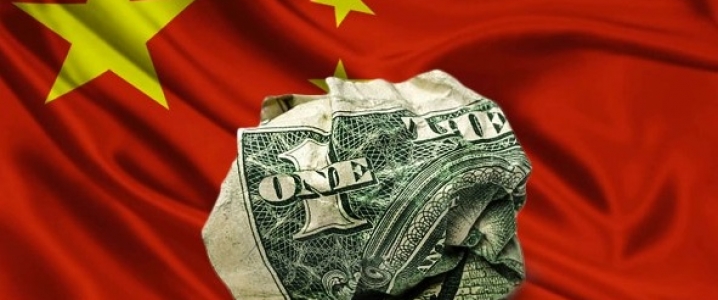By Zero Hedge
 On March 26 China will finally launch a yuan-dominated oil futures contract. Over the last decade there have been a number of “false-starts,” but this time the contract has gotten approval from China’s State Council. With that approval, the “petroyuan” will become real and China will set out to challenge the “petrodollar” for dominance. Adam Levinson, managing partner and chief investment officer at hedge fund manager Graticule Asset Management Asia (GAMA), already warned last year that China launching a yuan-denominated oil futures contract will shock those investors who have not been paying attention.
On March 26 China will finally launch a yuan-dominated oil futures contract. Over the last decade there have been a number of “false-starts,” but this time the contract has gotten approval from China’s State Council. With that approval, the “petroyuan” will become real and China will set out to challenge the “petrodollar” for dominance. Adam Levinson, managing partner and chief investment officer at hedge fund manager Graticule Asset Management Asia (GAMA), already warned last year that China launching a yuan-denominated oil futures contract will shock those investors who have not been paying attention.
This could be a death blow for an already weakening U.S. dollar, and the rise of the yuan as the dominant world currency.
But this isn’t just some slow, news day “fad” that will fizzle in a few days.
A Warning for Investors Since 2015
Back in 2015, the first of a number of strikes against the petrodollar was dealt by China. Gazprom Neft, the third-largest oil producer in Russia, decided to move away from the dollar and towards the yuan and other Asian currencies.
Iran followed suit the same year, using the yuan with a host of other foreign currencies in trade, including Iranian oil.
During the same year China also developed its Silk Road, while the yuan was beginning to establish more dominance in the European markets.
But the U.S. petrodollar still had a fighting chance in 2015 because China’s oil imports were all over the place. Back then, Nick Cunningham of OilPrice.com wrote…
Despite accounting for much of the world’s growth in demand in the 21st Century, China’s oil imports have been all over the map in recent months. In April, China imported 7.4 million barrels per day, a record high and enough to make it the world’s largest oil importer. But a month later, imports plummeted to just 5.5 million barrels per day.
That problem has since gone away, signaling China’s rise to oil dominance…
The Slippery Slope to the Petroyuan Begins Here
The ptrodollar is backed by Treasuries, so it can help fuel U.S. deficit spending. Take that away, and the U.S. is in trouble.
It looks like that time has come…

A death blow that began in 2015 hit again in 2017 when China became the world’s largest consumer of imported crude…
Now that China is the world’s leading consumer of oil, Beijing can exert some real leverage over Saudi Arabia to pay for crude in yuan. It’s suspected that this is what’s motivating Chinese officials to make a full-fledged effort to renegotiate their trade deal.
So fast-forward to now, and the final blow to the petrodollar could happen starting on March 26. We hinted at this possibility back in September 2017…
With major oil exporters finally having a viable way to circumvent the petrodollar system, the U.S. economy could soon encounter severely troubled waters.
First of all, the dollar’s value depends massively on its use as an oil trade vehicle. When that goes away, we will likely see a strong and steady decline in the dollar’s value.Related: China’s Gas Storage Capacity Can’t Keep Up With Demand Growth
Once the oil markets are upended, the yuan has an opportunity to become the dominant world currency overall. This will further weaken the dollar.
The Petrodollar’s Downfall Could be a Lift for Gold
Amongst all the trouble ahead for the dollar, there are some good news too. The U.S. might have ditched the gold standard in the 1970’s, but with gold making a return to world headlines… we could see a resurgence.
For the first time since our nation abandoned the gold standard decades ago, physical gold is being reintroduced to the global monetary system in a major way. That alone is incredibly good news for gold owners.
A reintroduction of gold to the global economy could result in a notable rise in gold prices. It’s safe to assume exporters are more likely to choose a gold-backed financial instrument over one created out of thin air any day of the week.
Soon after, we could see more and more nations jump on the bandwagon, resulting in a substantial rise in gold prices.

No comments:
Post a Comment